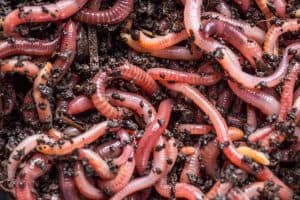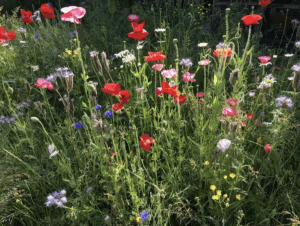Advice on choosing the right plants for the hot Summer ahead from Cathie at Cathie’s Gardening School, Secretts Garden Centre, Milford.
In April we were told there were to be water restrictions in many parts of the country including hosepipe bans. Anyway after a cold May we are promised a hot Summer and it is only right that we try to conserve as much water as possible. For those of you planting containers and baskets you might like to think about alternatives to your usual bedding plants.
Traditional Bedding Plants
Many of us choose tender perennials such as Pelargoniums, Impatiens and Fuchsias, and half hardy annuals such as Petunias, Lobelia, Alyssum and Tagetes to bring a riot of colour to Summer tubs, baskets and containers. Unfortunately these are all hungry and thirsty plants requiring a lot of attention. Often hanging baskets need to be watered daily if not twice a day in the height of Summer, perhaps not the best choice then with all the water restrictions.
Drought Tolerant Plants For Containers
To understand how some plants tolerate dry spells more than others it is necessary to think about where they grow in the wild. Many plants come from hot arid areas of the world and are adapted to long dry Summers. One of the best adapted is the cactus but I am not suggesting we all plant cacti in our tubs as they are very spiky! There are a wide range of succulent plants which have fleshy leaves and are able to store water for longer periods. The technical name is Xerophytic.
Delosperma, Mesembrianthemum, Lampranthus and Sedum are excellent trailing plants. Aloe and Aeonium provide wonderful structure and need next to no water.
Pelargoniums are actually desert plants and give lovely colourful flowers, there are many to choose from.
As it is Summer and there is no risk of frost many desert plants can be chosen and used successfully for this period. You will need to bring them in by the end of September if you want to keep them for future years.
Hardy Plants for the Flower Beds
For outside there are plants that tolerate drought conditions, although they do need a little watering to get established. These include:
Verbena bonariensis. A lovely tall purple flowering perennial loved by butterflies and bees but beware if you have a sandy soil it will seed everywhere!
Geranium macrorrhizum. A fabulous shallow rooting ground cover perennial with pink or white flowers, excellent for sun or partial shade. There are many other hardy Geraniums to choose from, not to be confused with the tender Pelargoniums often called Geraniums as they are closely related.
Alchemilla mollis. Lady’s mantle, a favourite with flower arrangers for it’s lovely feathery acid green flowers.
Digitalis purpurea. The foxglove which is technically a biennial and only lasts for two years but if you are clever can plant them every year and save the seed. They grow anywhere even dense shade.
Verbascum thapsus. Great Mullein and many others, some are biennial and other come back every year. Easy to grow from seed and seed readily if conditions are right.
Euphorbia cyparricias. Grows in sand dunes and tolerates drought. Pretty acid green flowers and many other varieties available. Some are more drought tolerant than others.
Ophiopogon planiscapus ‘nigrescens’. Looks like a black grass but is actually a member of the lily family. Excellent ground cover and good contrast for silver leaved plants.
Lavandula angustifolia. The good old English Lavender, loves hot dry sunny conditions and attracts bees. Many varieties available.
Stachys byzantina. Lamb’s ears, lovely furry leaves and pretty pink flowers. Covered in fine hairs to protect against water loss.
Osteospermum ‘Lady Leitrim’. This is one of the hardier varieties and has lasted through the winter very successfully at Secretts. Called the African Daisy which gives you a clue to where it grows!
Erysimum ‘Bowles Mauve’. One of the very best plants for the Summer as it flowers from May to September and often beyond. Insects love it and it is one of the few flowers that continues to secrete nectar for bees even in colder spells. It can look good in a bed, container or raised bed, why not plant a whole row of them?
Sempervivums. These are the houseleeks and despite their name fully hardy. We are in the process of making a ‘living roof’ of these in the teaching garden and they are never going to be watered!
There are many other plants that grow in dry conditions but too many to mention here. Alpines, small leaved herbs like thyme and don’t forget the Rudbeckias, Asters and Echinaceas which provide later Summer colour and thrive on prairie grasslands. We also have many native wild plants which not only tolerate drought but provide important food for our beneficial insects. There are also a whole range of grasses and bamboos and for the more architectural look try Echium, Phormium, Cordyline or Trachycarpus which is the hardy palm tree.
I hope this gives you some hope for the dry months ahead.
I am illustrating how important it is to learn the full name of the plant you want to use and what conditions it likes. It’s amazing how they are adapted to different conditions.
If you want to visit a garden why not try Beth Chatto in Colchester, she hasn’t watered her dry garden for years!
If you want to learn more there are regular workshops and taster sessions at the Gardening School available for everyone!




